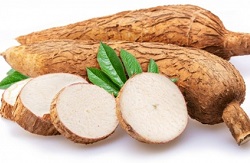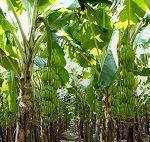Cassava is one of the most important staple crops in the world, particularly in tropical regions. It is a versatile root vegetable that plays a critical role in food security, economic development, and industrial applications. As global demand for alternative food sources and sustainable industrial materials grows, cassava and its derivative products are gaining significant attention in the global market. With this write-up we are exploring the potential of cassava, how cassava grows, classifies it as an agricultural product, identifies the leading producers and consumers, and explains why demand for cassava and its related products is increasing.
How Is Cassava Grown?
Cassava, also known as manioc or yuca, is a hardy root crop that thrives in tropical climates with minimal rainfall. It is a drought-resistant plant that can grow in poor soils, making it ideal for cultivation in regions where other crops may fail. Cassava is typically grown from stem cuttings rather than seeds. Farmers plant these cuttings directly into the soil, where they take root and grow into new plants.
The crop has a growing cycle of 8 to 18 months, depending on the variety and growing conditions. Cassava requires well-drained soil and a warm climate with consistent temperatures ranging between 25°C and 29°C. During growth, cassava plants need regular weeding to prevent competition for nutrients and water. Harvesting is done manually by pulling up the root tubers, which are the main product of the plant.
After harvest, the roots perish quickly and require immediate processing to prevent spoilage. Rich in carbohydrates, especially starch, the tubers provide a valuable calorie source for millions worldwide. However, they contain cyanogenic compounds, which must be removed through proper processing before consumption.
What Type of Agricultural Product Is Cassava?
Cassava is classified as a root crop and is primarily grown for its starchy tuberous roots. It falls under the category of staple food crops, alongside others like potatoes, yams, and taro. As a staple food, cassava serves as a major source of carbohydrates for more than 800 million people, particularly in Africa, Asia, and Latin America.
Cassava’s versatility goes beyond food; industries also use it in various applications. The roots are processed into flour, starch, and tapioca, which are used in various industries such as food processing, animal feed, pharmaceuticals, textiles, and biofuels. Cassava’s versatility makes it a valuable agricultural commodity with significant potential in the global market.
Top Five Producers and Their Production Capacity
The top five producers of cassava are primarily located in tropical regions where the climate is ideal for cassava cultivation. These countries collectively account for a significant portion of the world’s cassava production.
- Nigeria: As the largest producer of cassava globally, Nigeria produces over 60 million metric tons annually. The country relies heavily on cassava as a staple food and a source of income for millions of smallholder farmers.
- Thailand: Known for its robust export market, Thailand produces around 30 million metric tons of cassava per year. The country specializes in processing cassava into starch and chips for export, particularly to Asian markets.
- Indonesia: With a production capacity of approximately 25 million metric tons annually, Indonesia is a leading producer of cassava, primarily used for food and industrial applications within the country.
- Brazil: Brazil produces about 20 million metric tons of cassava each year, with its primary uses being food, animal feed, and industrial applications. The country has a strong domestic market for cassava-based products.
- Democratic Republic of the Congo: Producing roughly 15 million metric tons annually, the Democratic Republic of the Congo relies on cassava as a staple food, with most of the production consumed locally.
What Can Cassava Be Used For?
Cassava is an incredibly versatile crop with numerous uses across various industries:
- Food Products: People commonly consume cassava as a staple in forms like boiled roots, garri, fufu, and flour. Cassava flour is gluten-free and serves as an alternative to wheat flour in baking and cooking, making it popular among those with gluten intolerance.
- Starch Production: The food industry widely uses cassava starch as a thickener, binder, and stabilizer in products like sauces, soups, noodles, and confectionery. It also finds use in the paper, textile, and adhesive industries.
- Animal Feed: Farmers use cassava roots and leaves as animal feed, offering a high-energy food source for livestock. The protein-rich leaves also add nutritional value for animals.
- Biofuels: Cassava processes into ethanol, a renewable biofuel that serves as an alternative to fossil fuels. This application is gaining popularity as countries aim to reduce carbon footprints and promote sustainable energy.
- Pharmaceuticals and Cosmetics: Cassava starch acts as a binder in tablets in the pharmaceutical industry and as a base for powders. It is also used in cosmetics, such as powders and creams.
Top Five Consumers and Their Consumption Capacity
The leading consumers of cassava include countries where the crop is a staple food or has significant industrial applications:
- Nigeria: As both the largest producer and consumer of cassava, Nigeria consumes approximately 60 million metric tons annually, mainly in the form of traditional foods like garri, fufu, and cassava flour.
- Indonesia: Consuming around 24 million metric tons annually, Indonesia uses cassava extensively in food products, with growing demand for tapioca and other processed forms.
- Brazil: Brazil consumes about 19 million metric tons of cassava each year, with a focus on food and animal feed. The country’s diverse culinary culture includes various traditional cassava-based dishes.
- Thailand: Thailand consumes a significant portion of its 30 million metric tons production, primarily in the form of processed starch and other industrial products, with a smaller amount used for food.
- China: Although not a major producer, China is a top consumer of cassava, importing large quantities mainly from Thailand for industrial use, including starch and biofuels, consuming about 10 million metric tons annually.
Why Is There a Growing Demand for Cassava and Its Ancillary Products?
The global demand for cassava and its derivative products is growing due to several factors:
- Food Security: Cassava thrives in poor soils and withstands drought, making it a crucial crop for food security, especially in regions vulnerable to climate change.
- Gluten-Free and Health Trends: As gluten intolerance rises and health-conscious consumers seek alternatives, cassava flour provides a gluten-free option that is increasingly popular in baking and cooking.
- Industrial Applications: Industries widely use cassava starch in food, textiles, paper, and adhesives due to its versatility. Its demand grows as companies seek sustainable and renewable raw materials.
- Biofuel Production: The shift towards renewable energy has increased interest in using cassava as a feedstock for biofuel, particularly ethanol, which blends with gasoline.
- Economic Opportunities: The expanding global market for cassava creates economic opportunities for producers in developing countries, spurring investments in processing facilities and encouraging increased production by farmers.
Conclusion
Cassava’s potential in the global market is vast, driven by its versatility, resilience, and diverse applications across various industries. Major producers like Nigeria, Thailand, and Indonesia are well-positioned to take advantage of growing demand in food and industrial sectors. To fully realize this potential, countries need to invest in better processing technologies, improve supply chain efficiencies, and adhere to international standards. Cassava’s role in enhancing food security and providing economic benefits will continue to increase.
You can contact us on WhatsApp to discuss this topic further.




